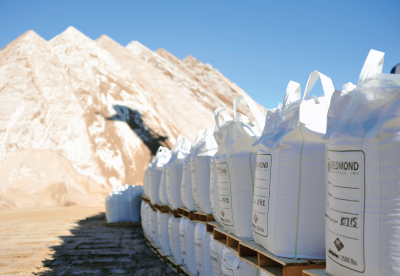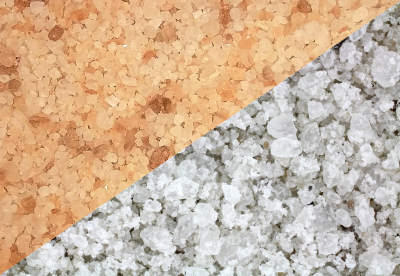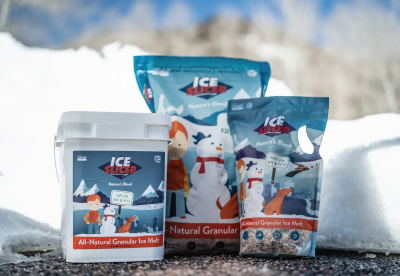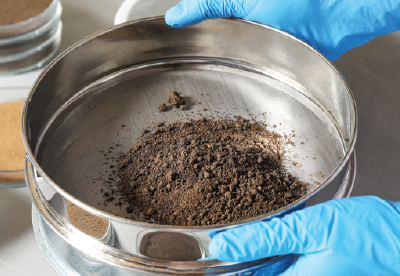Date February 6, 2023 | Brooke Loeffler
Do Deicers Damage Concrete?
Not All Concrete Is Created Equal
First, to understand how concrete and ice melt interact with each other, we must establish that not all finished concrete is created equal. There are many different factors that affect the strength and durability of finished concrete. These factors include:
- Ingredient quality
- Ratios
- Mixing techniques
- Curing conditions
- What it is being used for

Concrete Degradation
Structural engineers strive to make sure the world’s concrete stand up to wear and tear, weighted loads, natural disasters, and exposure to the elements for as long as possible. Unfortunately, no finished concrete can endure forever. After time, it will start to show the effects of degradation.
What Causes Concrete Damage?
Because concrete is porous, anything present in the environment will find a way in. The majority of concrete damage is caused by the combination of inferior concrete and repeated freeze/thaw cycles.
Freeze Thaw Cycles
When moisture is absorbed into the concrete, and then freezes, it expands by 9-10%. Over time, the hydraulic pressure of repeated expansion can break down and displace small pieces of concrete.

Acids
Concrete itself is a very alkaline material (around 11 on the pH scale). That means that any interaction with substances below 7 on the pH scale can cause deterioration as well. For this reason, you should avoid using ice melt that contains ammonium salts. According to the Portland Cement Association (PCA):
“Most ammonium salts are destructive because, in the alkaline environment of concrete, they release ammonia gas and hydrogen ions. These are replaced by dissolving calcium hydroxide from the concrete.”
Metal Corrosion
Steel reinforcements within concrete are susceptible to corrosion from moisture and oxidation, which leads to rust. The PCA has found that:
“when steel corrodes, the resulting rust occupies a greater volume than the steel. This expansion creates tensile stresses in the concrete, which can eventually cause cracking, delamination, and spalling.”
How to Protect Your Concrete
Each winter, a balance must be struck between protecting our safety on icy paved surfaces, and protecting the pavement itself.
*Note: you should always wait about a year before you introduce new concrete pours to ice melt products.
Let’s take a look at a few ways we can mitigate concrete damage while still protecting ourselves from injury during the winter.
The Right Concrete
Good quality concrete is much more resistant to damage of all varieties. Here are some examples of measures that can be taken on new pours and old slabs to protect concrete during the winter.
Air-Entrained Mix
If you plan on pouring a new slab, use air-entrained concrete. In each cubic foot of air-entrained concrete, there are billions of microscopic air cells. These pockets relieve the hydraulic pressure created by expanding ice. The PCA states that:
“the resistance of concrete to freezing and thawing in a moist condition is significantly improved by the use of intentionally entrained air. Entrained air voids act as empty chambers in the paste for the freezing and migrating water to enter, thus relieving the pressure in the capillaries and pores and preventing damage to the concrete.”
Low Water to Cement Ratio
Concrete mixed with less water will cure stronger and be more resistant to freeze/thaw degradation. Follow your concrete manufacturer’s mixing tables to ensure you are not adding too much water to your mix.
Seal Old Concrete
You can further protect older concrete slabs from both future damage with an effective sealer. Be sure to thoroughly research and read customer reviews so you can anticipate how well your sealer will hold up over time.
Use The Right Amount of Ice Melt
Always use a gentle hand when applying ice melt to concrete. Use a thin layer before a storm hits, then another light layer during the storm as you shovel. Using your ice melt responsibly will not only protect your concrete, but save you money as well.
Use The Right Ice Melt
Another way of reducing winter concrete damage is to reduce the number of freeze/thaw cycles your concrete endures. During the winter, temperatures can rise above freezing during the day and then plunge at night. Use an ice melt with long lasting re-freezing protection that will keep ice in a liquid state for a longer period of time.
 Ice Slicer® produces brine faster and lasts longer than regular white ice melt, thus preventing refreezing cycles on your concrete. Our all natural, Complex Chloride™ deicer is ammonia free and contains no harsh additives. Instead, Ice Slicer® contains a balanced blend of over 60 trace minerals that buffer the effects of ice melt on your concrete. These corrosion inhibitors are so effective, that in one ASTM B-117 test, Ice Slicer® was shown to be up to 70% less corrosive than white salt.
Ice Slicer® produces brine faster and lasts longer than regular white ice melt, thus preventing refreezing cycles on your concrete. Our all natural, Complex Chloride™ deicer is ammonia free and contains no harsh additives. Instead, Ice Slicer® contains a balanced blend of over 60 trace minerals that buffer the effects of ice melt on your concrete. These corrosion inhibitors are so effective, that in one ASTM B-117 test, Ice Slicer® was shown to be up to 70% less corrosive than white salt.
© 2024 Redmond Minerals Inc.






